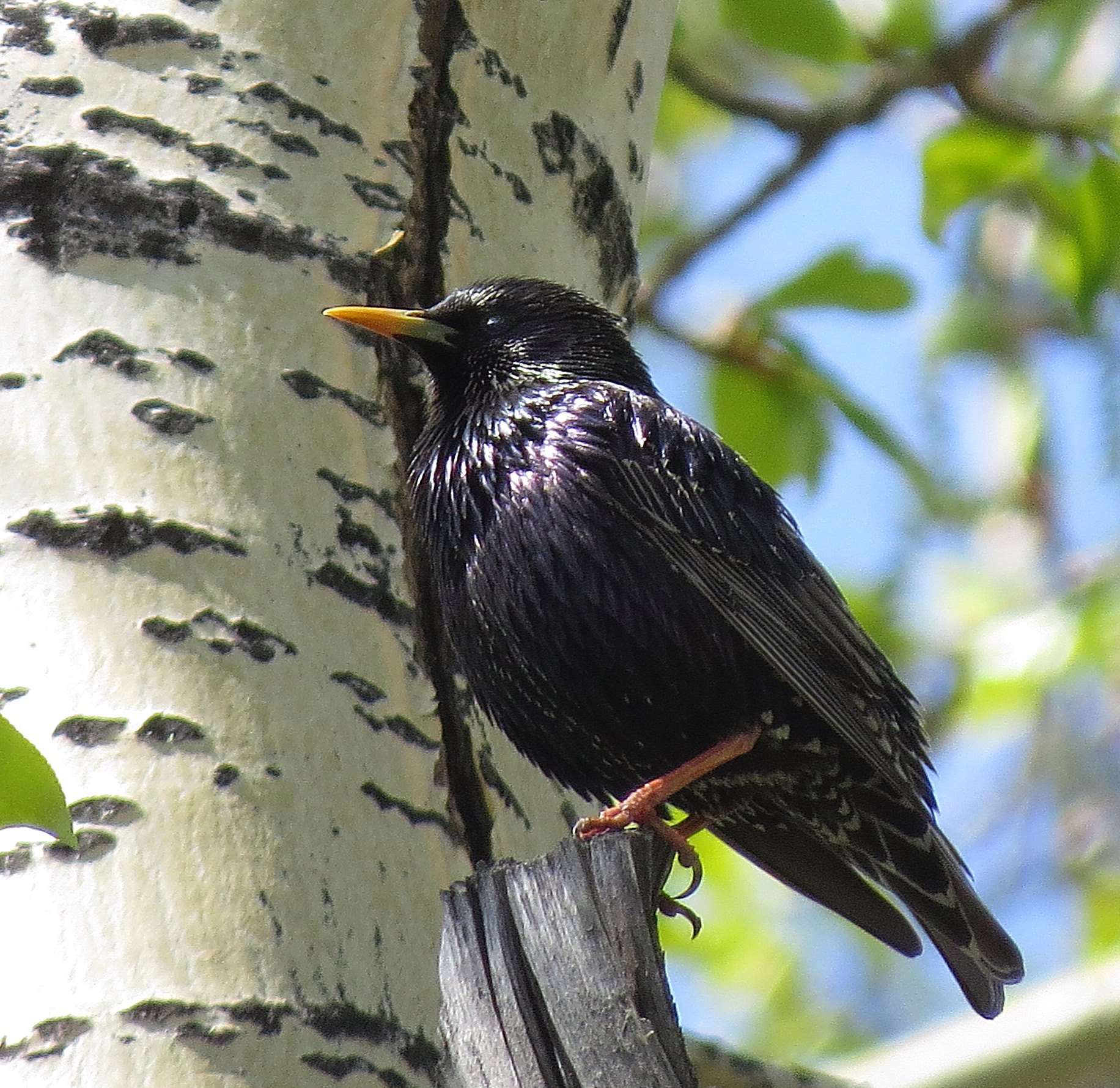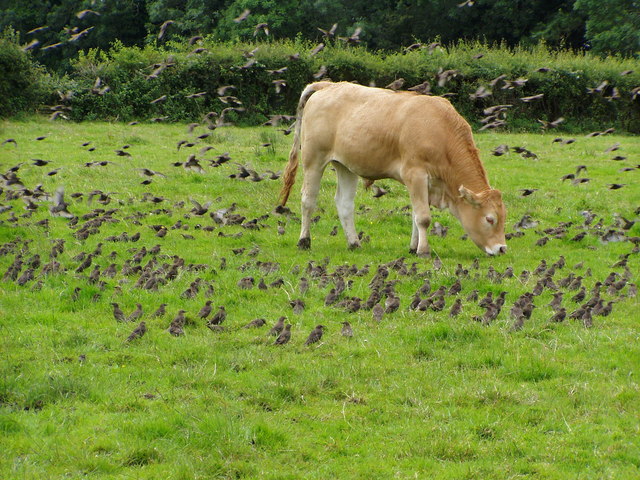|
Sturnus
''Sturnus'' is a genus of starlings. As discussed below, the Taxonomy (biology), taxonomy of this group is complex, and other authorities differ considerably in which species they place in this genus, and in the species boundaries within ''Sturnus''. The genus name ''Sturnus'' is Latin for "starling". This genus has representatives across most of Eurasia and one species, the Common starling, common or European starling, has been introduced to North America, South Africa, Australia and New Zealand. The more northerly breeding species are completely or partially Bird migration, migratory, wintering in warmer regions. The ''Sturnus'' starlings are terrestrial species; they walk rather than hop, and have modifications to the skull and its muscles for open-bill probing. The latter adaptation has facilitated the spread of this genus from humid tropical southern Asia to cooler regions of Europe and Asia. Starlings nest in holes in trees or buildings. They are Omnivore, omnivorous and ... [...More Info...] [...Related Items...] OR: [Wikipedia] [Google] [Baidu] |
European Starling
The common starling (''Sturnus vulgaris''), also known simply as the starling in Great Britain and Ireland, and as European starling in North America, is a medium-sized passerine bird in the starling family, Sturnidae. It is about long and has glossy black plumage with a metallic sheen, which is speckled with white at some times of the year. The legs are pink and the bill is black in winter and yellow in summer; young birds have browner plumage than the adults. Its gift for mimicry has been noted in literature including the ''Mabinogion'' and the works of Pliny the Elder and William Shakespeare. The common starling has about 12 subspecies breeding in open habitats across its native range in temperate Europe and across the Palearctic to western Mongolia, and it has been introduced as an invasive species to Australia, New Zealand, Canada, the United States, Mexico, Argentina, South Africa and Fiji. This bird is resident in western and southern Europe and southwestern Asia, whil ... [...More Info...] [...Related Items...] OR: [Wikipedia] [Google] [Baidu] |
Starlings
Starlings are small to medium-sized passerine (perching) birds known for the often dark, glossy iridescent sheen of their plumage; their complex vocalizations including mimicking; and their distinctive, often elaborate swarming behavior, known as murmuration. All members of the family ''Sturnidae'', commonly called sturnids, are known collectively as starlings. The Sturnidae are named for the genus ''Sturnus'', which in turn comes from the Latin word for starling, ''sturnus''. The family contains 128 species which are divided into 36 genera. Many Asian species, particularly the larger ones, are called mynas, and many African species are known as glossy starlings because of their iridescent plumage. Starlings are native to Europe, Asia, and Africa, as well as northern Australia and the islands of the tropical Pacific. Several European and Asian species have been introduced to these areas, as well as North America, Hawaii, and New Zealand, where they generally compete for habi ... [...More Info...] [...Related Items...] OR: [Wikipedia] [Google] [Baidu] |
Spotless Starling
The spotless starling (''Sturnus unicolor'') is a passerine bird in the starling family, Sturnidae. It is closely related to the common starling (''S. vulgaris''), but has a much more restricted range, confined to the Iberian Peninsula, Northwest Africa, southernmost France, and the islands of Sicily, Corsica and Sardinia. It is largely non-migratory.Hagemeijer, W. J. M., & Blair, M. J., eds. (1997). ''The EBCC Atlas of European Breeding Birds'' pp. 690. Poyser, London . Taxonomy and systematics Subsequent to the recent split of the genus ''Sturnus'', this species and the common starling are the only species retained in the genus. Hybrids with the common starling are found occasionally where the breeding ranges overlap in southwestern France and northeastern Spain. Description The adult spotless starling is very similar to the common starling, but marginally larger (21–23 cm length; 70–100 g weight), and has darker, oily-looking black plumage, slightly purple- or ... [...More Info...] [...Related Items...] OR: [Wikipedia] [Google] [Baidu] |
10th Edition Of Systema Naturae
The 10th edition of ''Systema Naturae'' (Latin; the English title is ''A General System of Nature'') is a book written by Swedish naturalist Carl Linnaeus and published in two volumes in 1758 and 1759, which marks the starting point of zoological nomenclature. In it, Linnaeus introduced binomial nomenclature for animals, something he had already done for plants in his 1753 publication of ''Species Plantarum''. Starting point Before 1758, most biological catalogues had used polynomial names for the taxa included, including earlier editions of ''Systema Naturae''. The first work to consistently apply binomial nomenclature across the animal kingdom was the 10th edition of ''Systema Naturae''. The International Commission on Zoological Nomenclature therefore chose 1 January 1758 as the "starting point" for zoological nomenclature and asserted that the 10th edition of ''Systema Naturae'' was to be treated as if published on that date. Names published before that date are unavailable, ... [...More Info...] [...Related Items...] OR: [Wikipedia] [Google] [Baidu] |
Genus
Genus (; : genera ) is a taxonomic rank above species and below family (taxonomy), family as used in the biological classification of extant taxon, living and fossil organisms as well as Virus classification#ICTV classification, viruses. In binomial nomenclature, the genus name forms the first part of the binomial species name for each species within the genus. :E.g. ''Panthera leo'' (lion) and ''Panthera onca'' (jaguar) are two species within the genus ''Panthera''. ''Panthera'' is a genus within the family Felidae. The composition of a genus is determined by taxonomy (biology), taxonomists. The standards for genus classification are not strictly codified, so different authorities often produce different classifications for genera. There are some general practices used, however, including the idea that a newly defined genus should fulfill these three criteria to be descriptively useful: # monophyly – all descendants of an ancestral taxon are grouped together (i.e. Phylogeneti ... [...More Info...] [...Related Items...] OR: [Wikipedia] [Google] [Baidu] |
Invertebrate
Invertebrates are animals that neither develop nor retain a vertebral column (commonly known as a ''spine'' or ''backbone''), which evolved from the notochord. It is a paraphyletic grouping including all animals excluding the chordata, chordate subphylum Vertebrata, i.e. vertebrates. Well-known Phylum, phyla of invertebrates include arthropods, molluscs, annelids, echinoderms, flatworms, cnidarians, and sponges. The majority of animal species are invertebrates; one estimate puts the figure at 97%. Many invertebrate taxon, taxa have a greater number and diversity of species than the entire subphylum of Vertebrata. Invertebrates vary widely in size, from 10 Micrometre, μm (0.0004 in) myxozoans to the 9–10 m (30–33 ft) colossal squid. Some so-called invertebrates, such as the Tunicata and Cephalochordata, are actually sister chordate subphyla to Vertebrata, being more closely related to vertebrates than to other invertebrates. This makes the "invertebrates" para ... [...More Info...] [...Related Items...] OR: [Wikipedia] [Google] [Baidu] |
Toulouse - Sturnus Vulgaris - 2012-02-26 - 3
Toulouse (, ; ; ) is a city in southern France, the prefecture of the Haute-Garonne department and of the Occitania region. The city is on the banks of the River Garonne, from the Mediterranean Sea, from the Atlantic Ocean and from Paris. It is the fourth-largest city in France after Paris, Marseille and Lyon, with 511,684 inhabitants within its municipal boundaries (2022); its metropolitan area has a population of 1,513,396 inhabitants (2022). Toulouse is the central city of one of the 22 metropolitan councils of France. Between the 2014 and 2020 censuses, its metropolitan area was the third fastest growing among metropolitan areas larger than 500,000 inhabitants in France. Toulouse is the centre of the European aerospace industry, with the headquarters of Airbus, the SPOT satellite system, ATR and the Aerospace Valley. It hosts the CNES's Toulouse Space Centre (CST) which is the largest national space centre in Europe, but also, on the military side, the newly created ... [...More Info...] [...Related Items...] OR: [Wikipedia] [Google] [Baidu] |
Ice Age
An ice age is a long period of reduction in the temperature of Earth's surface and atmosphere, resulting in the presence or expansion of continental and polar ice sheets and alpine glaciers. Earth's climate alternates between ice ages, and greenhouse periods during which there are no glaciers on the planet. Earth is currently in the ice age called Quaternary glaciation. Individual pulses of cold climate within an ice age are termed '' glacial periods'' (''glacials, glaciations, glacial stages, stadials, stades'', or colloquially, ''ice ages''), and intermittent warm periods within an ice age are called '' interglacials'' or ''interstadials''. In glaciology, the term ''ice age'' is defined by the presence of extensive ice sheets in the northern and southern hemispheres. By this definition, the current Holocene epoch is an interglacial period of an ice age. The accumulation of anthropogenic greenhouse gases is projected to delay the next glacial period. History of research ... [...More Info...] [...Related Items...] OR: [Wikipedia] [Google] [Baidu] |







